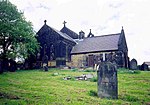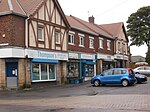Cardinal Hume Catholic School
Academies in GatesheadCatholic secondary schools in the Diocese of Hexham and NewcastleNorth East England school stubsSecondary schools in GatesheadTyne and Wear building and structure stubs
Cardinal Hume Catholic School is a coeducational secondary school and sixth form located in the Beacon Lough area of Gateshead, Tyne and Wear, England. It is named after Basil Cardinal Hume, a former President of the Catholic Bishops' Conference of England and Wales.
Excerpt from the Wikipedia article Cardinal Hume Catholic School (License: CC BY-SA 3.0, Authors).Cardinal Hume Catholic School
Old Durham Road,
Geographical coordinates (GPS) Address Phone number Website External links Nearby Places Show on map
Geographical coordinates (GPS)
| Latitude | Longitude |
|---|---|
| N 54.9308 ° | E -1.5767 ° |
Address
Cardinal Hume Catholic School
Old Durham Road
NE9 6RZ , Wrekenton
England, United Kingdom
Open on Google Maps










